Purchase SQ Chips 2: CDJapan | Play-Asia
Without question, SQ Chips was a success for Square Enix. Fans loved it, critics loved it, and it apparently sold well enough in Japan and worldwide to not only do a sequel album, but to also dig deep in the chiptunes scene and create separate chip-arrange albums for Final Fantasy VII through XI.
I’ve probably said this in other reviews, and I’ll say it in this one as well: if you’re going to milk a franchise, and/or you’re going to milk an arrangement style for your franchises, it’s not necessarily a bad thing as long as it’s done right! Look at Falcom, after all. The Ys series took on a life of its own in the world of music; Falcom rewarded eager listeners, and in turn, Falcom was rewarded for providing high-quality music. Win-win, right?
So, is SQ Chips 2 following in the convention of “win-win,” or do we have a series of phoned-in arrangements to try and hop on a burgeoning fad (the chiptunes scene)? I’ll “give it to you straight” after the jump.
So, in the realm of chiptune arrangements for game music that didn’t use the technology originally, there are generally three arrangement styles that can occur:
1) vanilla transcription, or an “8-bit demake” — trying to fit the source tunes into a chip-track that might actually be playable on an NES (3 channels), not adding anything new to the song, just compressing it to the simple chiptunes form.
2) True arrangement, limited to true chiptunes — Changing the musical style of the original piece, or adding new harmonic content, and certainly layering more than 3 channels, but keeping all of the music limited to square waves and other hardware-emulated tunes.
3) “Chip plus” arrangements — Using chiptunes and other synths, samples, or instruments to make an amalgam arrangement.
In SQ Chips 2, the breakdown is like this: 40% of the arrangements are of the 1st arrangement style, 30% border between 1 and 2, 20% are squarely type 2, and the last 10% goes nuts in type 3.
For some people, the “demake” style of the album was a little underwhelming. Frankly, I thought it was awesome, especially given the song selection. Let’s take a look at all 14 tracks and see what works and what didn’t.
The album opens with an arrangement of the “Prologue Movie” from Final Fantasy Tactics, arranged by (S_S). This is a type 1 arrangement: hardly anything added to the song, just trying to fit the original orchestral track into an 8-bit soundscape. Frankly, I love it, and I think it works perfectly. If someone wants to make a tile-based demake of FFT using the old Famicom Fire Emblem games as a template, they’ll want to pay attention to this track and arrange the rest of the OST likewise. (S_S) does a fantastic job staying true to the source, and the end product actually sounds really cool.
Next, we have a classic FF tune arranged by someone I’ve never heard of and can find zero biographical information on … the track is Final Fantasy V‘s “Clash on the Big Bridge” (aka the Gilgamesh battle theme), and the arranger goes by the name pocomeko. pocomeko definitely uses more than 3 channels of audio in this arrangement, and there are some weird wind effects at the end of the track, but otherwise it’s a pretty straightforward arrangement of the original. The arrangements leans heavily on the treble, and could have benefited from heavier bass tones, especially in the first minute (the bass hits hard after the break into the song’s B section).
Hige Driver, an arranger and performer who has done a variety of musical styles on other “SQ” albums, does a “type 2” arrangement of PRIMAL EYES (the theme song for Parasite Eve). Some new melodic and counter-melodic patterns make their way to the surface in this arrangement, and some of the audio is on the border of what chip-based audio hardware could actually do, but it’s all pretty wavy and 8-bit-ish. This is one of the stronger arrangements on the album and really does satisfy in ways that the “PE Remixes” album never could.
Track 4 is without question the most irritating track on the album, mostly because of the source tune. Call me crazy, but I just cannot get into “TOBAL No.1 ~ Hills of Jugon,” obviously from Tobal No.1 (a very early PS1 release from Square). The source music is from Mitsuda and Nakano, and the arrangement is from the very talented BOKKADENcI, who loves to include speak&spell samples in his arrangements. “Press the letters when I say” and “T O B A L … Level One!” are the samples he uses in this syncopated jazz track, and some of the melodic work is, while compressed and computer-y, not at all the kind of music one could produce with Game Boys and NES’s lined up on a table. So it’s a type 3 arrangement, and it’s an impressive arrangement, but I am just totally turned off by the source material. It’s bouncy and cute in all the wrong ways.
But things go from bad to great with the next track. Two of the best melodies from Chrono Cross (Girl Who Stole the Stars ~ Fragments of a Dream), arranged by MoNACA’s Hidekazu Tanaka in a simple style that is at times clearly “type 1” arrangement, but includes enough little decoration to border on “type 2.” The first 90 seconds are the classic music that serves as a theme for Kid, and then we get the chip arrangement of Noriko Mitose’s haunting end vocal theme. Chills and goosebumps hit me, hard, when I listen to this one.
Next up, the wonderful Saitone brings us a “type 3” arrangement for Final Fantasy VII‘s flying theme, “The Highwind Takes to the Skies.” This is the first of two flying themes on SQ Chips 2, and they are both quite good. Saitone starts with the original theme and then reworks it in so many ways, sometimes I get lost. It’s morphed into this diminished version itself right from the start, but then it expands, and yes, the main music is classic square- and triangle-wave chiptunes, but there are other weird and wonderful synth decorations. Then there are fun new musical patterns and a ton of sound samples that serve as a sort of funky percussion. This arrangement is a beast and I love it.
We got one Sakimoto / Ivalice track at the start of the album, and right in the middle, we get another. The prologue music for Vagrant Story, “Graylands Incident Climax,” is a type 1 arrangement, but with some weird menu-selecting sound effects and a compressed choir synth included, so it’s like type 1 with just a touch of type 3 (!!). The arranger, noreason, did a phenomenal job with this 5 minute track, distilling the best parts of the extra-long prologue theme and giving us everything we could want. It brings back fond memories of this classic Sakimoto soundtrack, and it makes me want to experience it in a whole new way. Can someone make a mod of this game in Minecraft or something? That would be miraculous.
For track 8, KPLECRAFT gives us his unique, signature style atop one of Uematsu’s lesser-celebrated, but no less impressive, battle themes: “Seymour Battle” from Final Fantasy X. This was always a wild synth/dance/rock fusion, so it was a great choice to be arranged in a chiptunes style, and it was also a great song for KPLECRAFT to take on. This is also one of the longest arranged tracks on the album, clocking in at 5 and a half minutes (the only track to surpass it is the closer). If every song on this album were as good as what KPLECRAFT has here, I’d declare the album a must-buy.
The next two tracks are, both of them, truly unexpected pieces. The first, “The Order That Must Be Protected” from Dissidia: Final Fantasy. 80% of that OST was reworked material, but Takeharu Ishimoto did write some original music for that soundtrack, and in this track, chip legend “hally” (he needs to do more w/ Square Enix in my opinion!!) turns the song into something totally amazing. I had forgotten about this piece of music altogether, but I’ll not forget it now that I’ve heard hally’s version. It seriously feels like Dissidia just became a Mega Man 2 stage theme. So good. So perfect. And after that, KPLECRAFT returns with a surprise arrangement from Noriko Matsueda’s first solo soundtrack with Square, Bahamut Lagoon (Super Famicom). This is a crazy, at times atonal battle track, “Mid Boss Battle,” and KPLECRAFT just lets everything loose in the arrangement. You don’t have to be familiar with the source tune to enjoy this frantic arranged piece of music, but it probably helps. Having played Bahamut Lagoon and Live A Live, I’m always thankful when Square Enix remembers these never-remade, never-localized 16-bit classics.
And now, ladies and gentlemen, we have “Flight” from Xenogears. Before getting into the arrangement, can we all just agree that whoever got this arrangement was being tossed a softball? You’d have to *try* to make this song sound bad. It’s one of Mitsuda’s best, and it’s got a simple yet elegant chord progression. Amazingly enough, Keito Kyonomori (also known as “KAY” and “chisyamori”) took that softball and hit it as though it were a hardball, distorting our own perception of reality to suggest that the metaphorical ball not only left the park, but it was an act of God that everything turned out the way it did. I think what makes this arrangement special is that hurried sense that comes from working in a fast-tempo irregular time signature (sometimes 5, sometimes 3, never 4!). This is a type 3 arrangement, as it includes piano atop all the chippy goodness. Great, great work here. I want more from this Keito Kyonomori, who is a newcomer to the SQ albums.
Before we get to the amazing finale, we have some duds to work through. “Hometown Domina” from Legend of Mana — for the life of me, I’ve never understood why people like this song so much. There are so many great tracks on Shimomura’s seminal Mana soundtrack, but for me, this just ain’t one of them. So I’m coming in with a bias against the song. Then, SmileR (whoever that is) adds some “falling star” decorative sound effects and other funky effects, and some pizzicato strings atop the chips (so, yeah, type 3). Fortunately for me, this song is extra short, just barely over 2 minutes, making it the shortest track on SQ Chips 2. I predict that my not liking this track will probably be the only real “controversial” opinion I hold about the whole album. We’ll see!
And then, sigh, “Opening Theme” from Final Fantasy. I’ve heard enough of the FFI / series-shared songs, seriously. And how can you improve upon what Räfven did on Beer SQ? In my mind, there’s just no point. That didn’t stop chip-group YMCK from trying though, and they turned the song into a super-jazzy affair, packing every second with as much crazy content as possible. Am I impressed? Yes. Did I enjoy the end product? Not really. It’s skippable.
For the finale though, we have an absolute winner. SEXY-SYNTHESIZER, the duo that can do no wrong no matter what genre of electronic music they’re workin on (have you heard their track on NieR -echo-? It’s phenomenal!), takes on the end credits music for Live A Live, a Super Famicom game that has seen ridiculous amounts of love across the SQ albums (there are nearly a dozen of them now and almost all of them have a LAL track!). Yoko Shimomura, I hope, is beaming at the prospect of a remake. Square Enix’s music dept has paid so much attention to this little gem, and it is much-deserved. What’s great about the ending music, “Live for Live,” is that it has its own beautiful original theme and ALSO works in the 7 main character themes. The OST version is fantastic on its own, but this new version from SEXY-SYNTHESIZER is just disgustingly good. It’s like a double-layered chocolate cake. Please excuse the stains on my shirt and smudges on my face: I just devoured the whole cake by myself. I am a music (and metaphor) glutton.
But no, seriously, these character themes are awesome, and this new arrangement makes them that much cooler. The wrestler music, the western music, the cyberpunk theme, the monk / child theme … oh man, they are all so wonderful. I need to play this game again. And Square Enix needs to make that possibility a reality for all the English-speaking gamers out there.
Alright, off the Live A Live soapbox.
So, this album has a few excellent tracks, a lot of worthwhile music, but a couple of weak tunes snuck in as well. Such is to be expected. It’s not a must-have, but if you liked the first Chips album, you may as well get this one too. The straightforward arrangement, the ones that “give it to us straight” (get it?), are surprising in the sense that they *work* in a way that many people would not have guessed. But the super-sugary decorative stuff, like the Chrono Cross, Xenogears and Live A Live arrangements, are sure to be the fan favorites.
And for what it’s worth, if they’re reading this, I’d certainly be up for an SQ Chips 3. Go for even more obscure titles from the repertoire, and maybe bring on a few Western chiptunes arrangers!
Purchase SQ Chips 2: CDJapan | Play-Asia
Tags: Bahamut Lagoon, BOKKADENcI, Chiptunes, Chrono Cross, Final Fantasy, hally, Hige Driver, KPLECRAFT, Live A Live, Music Reviews, noreason, Reviews, Saitone, SEXY-SYNTHESIZIER, SQ, SQ Chips, SQ Chips 2, Square Enix, Vagrant Story, YMCK





























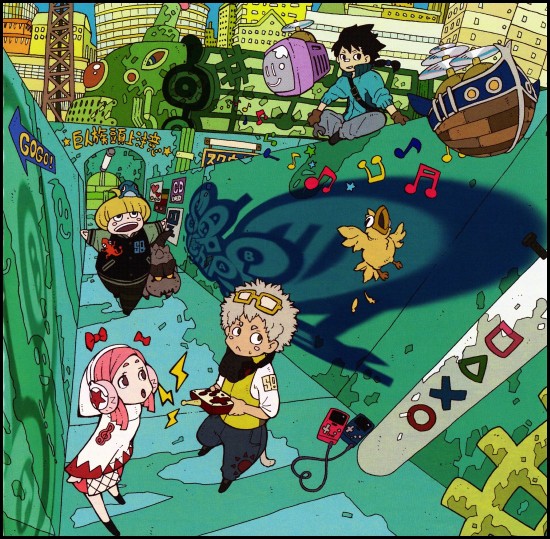
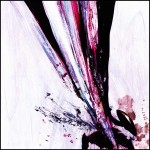
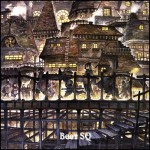
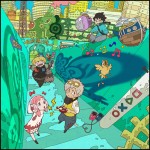
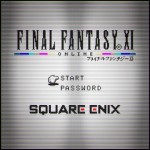







Hills of Jugon wouldn’t have been my first choice to take from the Tobal No. 1 soundtrack, but I think its an ambitious selection as a challenging source because its so ethereal and the cover is certainly loose in it’s reinterpretation, and just different from what you expect. I respect the artistic intentions, but I don’t blame you for not liking it. And to clarify, I thought it was the remake that is bouncy and cute, not the source.